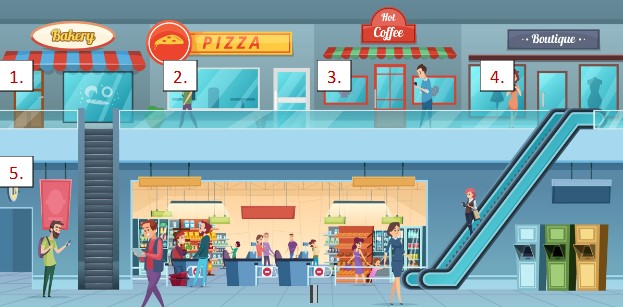By: Kaley Shepard, PharmD
I find myself reminiscing on my childhood—summer nights, building castles out of tattered blankets. Though unimpressive to the adult eye, I saw worlds of possibility, creating new tales each night. I didn’t realize the imaginary creation of castles and unique storylines would be a critical aspect of my professional development. While the palaces of my childhood held fairytales, the palaces of my adult life hold information—memory palaces of medication classes.
What is a Memory Palace?
A memory palace, also called the Method of Loci, is a mnemonic device that is used to quickly and accurately recall large quantities of information. The technique involves visualizing a familiar location and associating the information to be memorized with it.1 When the information needs to be recalled, you can visualize this location and navigate through your memory palace. As you progress, the information associated with your path can be quickly retrieved for immediate use. The technique was developed in 477 BC by Greek poet Simonides of Ceos when he recalled where various individuals sat during a banquet.2 Since their inception, memory palaces have served as an effective memorization technique worldwide. In fact, 35 “memory champions” state memory palaces are the most important tool we have for durable, lifelong learning.3 Perhaps this is because creating a memory palace involves several learning techniques that are scientifically proven to be effective: active retrieval, interleaving, and variation in learning style.1 Additionally, creating a memory palace involves several senses, further increasing familiarity with the material.
Memory Palaces in Healthcare
Those working in healthcare must learn a vast amount of material in a short timeframe. More importantly, they must retain the information throughout their professional career, recalling information at a moment’s notice and applying it conceptually to each patient case. If memory palaces have allowed memory champions to accurately recall massive quantities of information in a short timeframe, perhaps this device could be useful for those in healthcare. To assess its benefit here, Qureshi, et al examined medical students using a memory palace to learn diabetes mellitus and insulin management.4 They found that students who utilized a memory palace to reinforce the material earned significantly higher scores on their end-of-course evaluation compared to those who did not (93.1% vs. 81.0%). Additionally, 92.9% of the memory palace group felt they could recall the information easier.4 Although studies assessing this technique in healthcare are limited, this data suggests memory palaces could play a key role, allowing for rapid, durable memorization, and early conceptual understanding of the material. Becoming an effective healthcare practitioner requires more than just memorization. However, it is necessary to memorize much of what is learned in professional school to later employ higher order critical thinking.
Memory Palaces in Action
The areas where memory palaces could be applied in pharmacy school are limitless. However, I believe the most benefit would be gleaned during didactic learning and North American Pharmacist Licensure Examination® preparation. This technique allows students to easily group or separate medication classes as they “walk” through the rooms of their memory palace. Let’s examine what this looks like in the memory palace I crafted below.

You are learning the thiazolidinediones. To do so, you visualize your local mall. You have spent every Saturday for the past year here, so you are familiar with the shops. You assign each shop a different aspect of the thiazolidinediones, as seen below. As you walk through each shop, you recall the following:
- Bakery: Drug(s)
- The owner of the bakery is Rosie (rosiglitazone).
- Each time you visit, she gives you a piece of pie (pioglitazone).
- Pizza: Mechanism of Action
- After eating your slice of pie, you stop by the pizza store to get a slice of pepperoni (PPARƴ agonist) pizza.
- Hot Coffee: Indication(s)
- Next, you grab your favorite sugary latte (type 2 diabetes mellitus hyperglycemia) from the coffee shop.
- Boutique: Adverse Drug Reactions
- Next is the boutique. Here, you buy a yellow (jaundice🡪hepatic failure) frock (fractures) from the cashier named Vlad (bladder carcinoma).
- Grocery Store: Contraindications
- Lastly, you stop by the grocery store to get three or four boxes of your favorite heart-healthy (New York Heart Association class III-IV heart failure) cereal, Cheerios®.
With the creation of this memory palace, you can now quickly recall the key concepts about thiazolidinediones just by “walking” through your favorite mall. This technique could be utilized for other medication classes, or even treatment algorithms, such as management of acute coronary syndromes. Memory palaces could even be used in a non-healthcare setting, such as creating a grocery list.
How can you utilize this device in your teaching to produce lifelong, durable learning for your students (or even yourself)?
Acknowledgements
Kimberly Elder, PharmD, BCPS and Sarah Raake, PharmD, MSEd, BCACP, LDE
References
- Brown PC. Make It Stick: The Science of Successful Learning. Cambridge, MA. The Belknap Press of Harvard University Press. 2014.
- Yates FA. The Art of Memory. London: Pimlico, 1966.
- Magazine S, Handwerk B. Neuroscientists Unlock the Secrets of Memory Champions. Smithsonian Magazine. https://www.smithsonianmag.com/science-nature/why-you-can-train-your-brain-memory-champion-still-forget-your-car-keys-180962496/
- Qureshi A, Rizvi F, Syed A, Shahid A, Manzoor H. The method of loci as a mnemonic device to facilitate learning in endocrinology leads to improvement in student performance as measured by assessments. Adv Physiol Educ. 2014;38(2):140-4.
Author Bio(s):

Kaley Shepard is a PGY1 pharmacy resident at UofL Health – UofL Hospital. Educational scholarship interests include creating innovative teaching strategies and leadership. In her free time, Kaley enjoys playing the guitar and spending time with her friends and family.
Pulses is a scholarly blog supported by a team of pharmacy education scholars.

This is a great article. I just shared it with my preceptors!!!
LikeLike